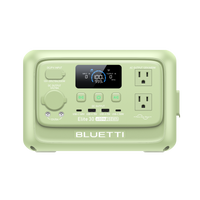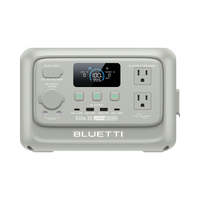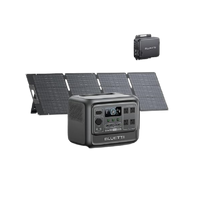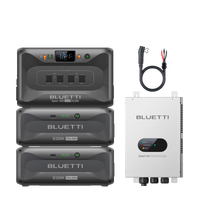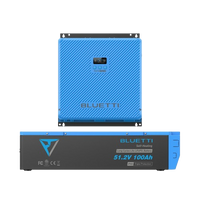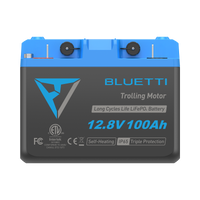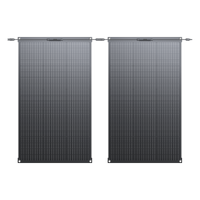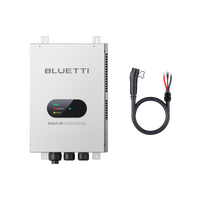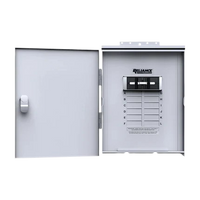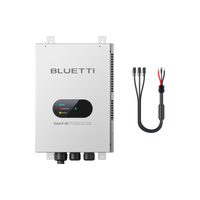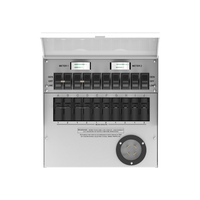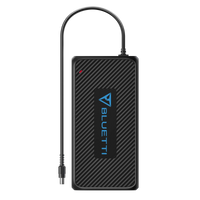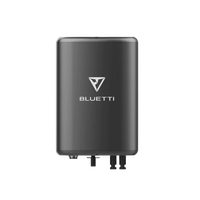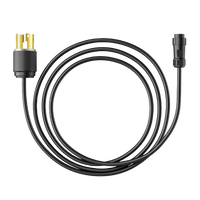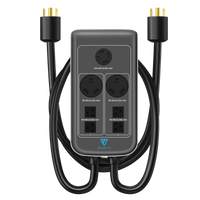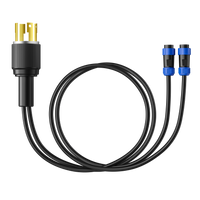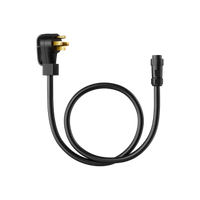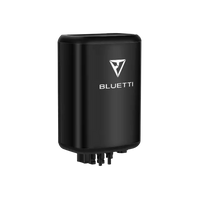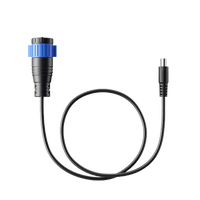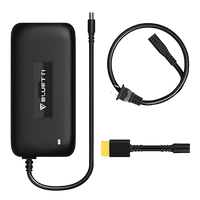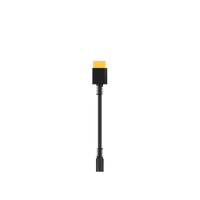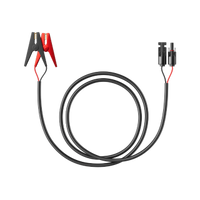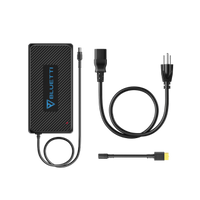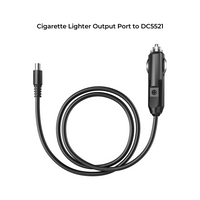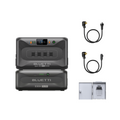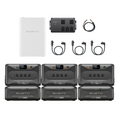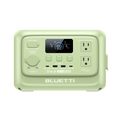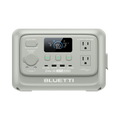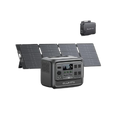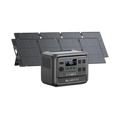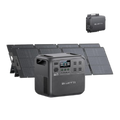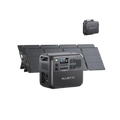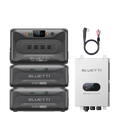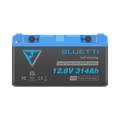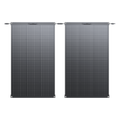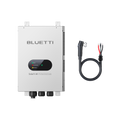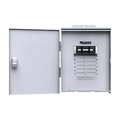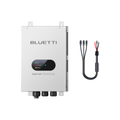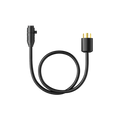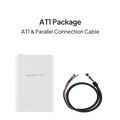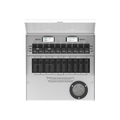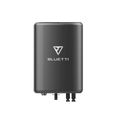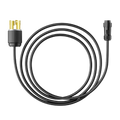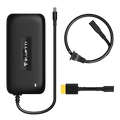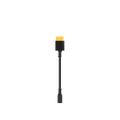Of course, nothing can beat the comfortable breeze of the window-based ACs on those sunny, bright, and hot days when the temperatures soar. These gadgets, toiling hard to cool us down, get us to think how much electrical power they actually draw. In answering that question, this article gives you a clear picture of the power consumption of the window AC units.
We shall be explaining BTU, Rated Watts, Running Watts, and Watt-Hours; make a comparison for energy use between the small and large window AC units; explain how you could calculate your window AC's energy consumption; and suggest the right generator size for the window ACs.
Understanding BTU, Rated Watts, Running Watts, and Watt-Hours
Before we go to the window AC wattage consumption, it would be best if some basic terms within energy consumption and cooling efficiency are shed light first. Those terms are:
-
British Thermal Unit
This heat energy unit shows how much hotness can raise a one pound water temperature by a single degree Fahrenheit. It is also showing how much heat a pound of water can take and release.
It's used to show the cooling power of an air conditioner. The more this rating of an air conditioner, the stronger the cooling ability. A window AC with a higher BTU rating can cool a bigger area than one with a lower score.
-
Rated Watts and Running Watts
There are two different terms to measure how much power an appliance uses. Rated wattage is the maximum power that an appliance can pull from the electricity source and running watts are the average energy that a devices uses under normal operation.
For instance, a window AC unit might be rated at 1200W, but the standard use during operation might be 900-watts. The rated wattage is usually higher than the running watt because some appliances need more power to start up than they require to run steadily.
-
Starting Watts
Another term for this is "starting watts," which shows how much power an appliance uses. However, it is different from rated watts or running watts. The starting watts are the maximum burst of power that the appliance needs to turn on or start. Actually, it is much more than the rated/running wattage, but for a very short period.
For instance, a 1,800W for AC windows would be approximately fifty percent higher than its rated wattage at 1200-watts. But this occurs in just a few seconds when the unit is turned on. After this start-up period, power consumption reduces to running wattage level.
-
Watt-Hours
It measures the amount of energy unit that helps know how much electricity an appliance uses over a certain period of time. It's equal to a watt of power consumed times the period in hours. For instance, a certain appliance uses 100W for 2 hours, hence it consumes energy in watt-hours of 200.
Watt-hours are useful in doing calculations on the cost of energy and environmental impacts concerning using an appliance. When a consumer knows the watt-hours an appliance consumes, he is able to know how many dollars one has to part with in the electricity bill and how much carbon dioxide he produces into the air.
How Many Watts Does a Small Window AC Use?

The best kind of compact window AC units for you would be those which cool a single room or the confined space. Most of these units are made with a cooling capacity of around 5,000 to 8,000 BTUs, which can cool 200 square feet.
So, how much power do they consume? Generally, its energy consumption is dependent on a couple of factors. However, on average, a compact window AC system will use between 500 to 800 watts of electricity when in operation at its maximum capacity. In other terms, it is not as high as the larger windows that require an average consumption of 900W to 1,500W.
You should, however, note that the power use of your compact window AC unit may vary. This variation may be depending on the efficiency rating, the age, and also the unit's condition, as well as the outside temperature. You can obtain the actual requirement of the setup either by reading from the label found at the back of the system or reading the owner's manual that came with it. However, these are good figures to give you a rough idea of how much electricity your compact ACs may be utilizing.
How Many Watts Does a Large Window AC Use?
If you have a big room/space with tall ceilings, then a large window conditioner with a high cooling capacity would likely be necessary. Depending on the BTU rating, it could accommodate an area of as big as 1,600 square feet.
So, what about its power usage then? Well, it varies with the power it consumes, which in this case is variable but, on average, a large window AC unit should consume anywhere between 900 to 1,500 watts of electricity when turned to the full-blast cooling mode. That is more than the energy consumption of a compact window AC unit, which runs anywhere between 500 to 800 watts.
It's not an absolute value. Some models with a higher energy efficiency ratio could have the same cooling effect but consume less power, while certain old or absolutely un-maintained units will consume more.
The exact energy consumption of your large window AC unit is usually stated on the unit's label or in the manufacturer's manual. However, just to provide you with an estimate, the figures above would help you estimate the energy consumed by your large window AC unit.
What Size Generator Do You Need for Window ACs?
And if you have really decided to run your window AC with a generator, then most definitely you should have an idea about the power consumption of your AC unit and the power output your generator can deliver. A 1000-watt generator can enable you to run a small to medium-sized window AC unit, while for big window AC units, you may call in a 2000-watt generator.
But in pursuit of another green, silent, and option with frugal knees, a solar power generator would probably be what you're considering. Basically, a solar power generator works by catching solar energy from a solar panel and storing it inside a battery. The stored energy then runs your AC unit or whatever device you want to use. The only thing is the high cost of purchasing a solar power generator and solar panels, but after an initial one-time expense, you can save money because it provides free power.
Today, however, with the technological development of solar power, there is a diversity of generators in the market, and the following three models could possibly power your window AC unit:
BLUETTI AC200MAX +Solar Generator Kit

The package includes a generator AC200MAX and a solar panel PV200. The generator has an inverter of 2200W AC pure sine wave, which is able to handle a surge power to as high as 4800W. Moreover, it possesses a battery capacity of 2048Wh LiFePO₄, which can last for more than 3500 cycles. The battery can also be extended in capacity to 8192Wh, including two B230 or two B300 batteries.
The generator has seven recharging modes: AC recharging, solar recharging, car recharging, generator recharging, lead-acid battery recharging, dual AC recharging, AC+Solar. Besides, there exists a solar input of 900W maximum, while the fast dual input is 1300W. On top of that, the setup is controlled and tracked by the use of an app.
The panel is a 200W foldable and portable sunlight collector. With a great conversion yield of 23.5%, it is excellently waterproof and sturdy, hence the ability to stand in very harsh weather cases.
BLUETTI AC200P + PV200 Solar Generator Kit

The panels are designed to a rigid nature, with a high 23.5 percent output ratio and are water-resistant to survive tough climates.
The system has a built-in 2000W AC pure sine wave inverter, which can have a peak power of up to 4800W. The setup also has a 2000Wh LiFePO₄ battery capacity, supporting over 3500 cycles. This generator gives 17 output modes, which are suitable for all types of home appliances, including AC, DC, USB, and wireless charging. It offers seven modes of recharge, such as AC, solar, car, generator, lead-acid battery, dual AC, and AC+Solar.
It has solar input up to 700W and dual fast charging up to 1200W. This is indeed an eco-friendly, gas-free, quiet, and cost-effective generator.
BLUETTI AC300 +B300 + 3*PV200 Solar Generator Kit

Inside is a 3072Wh LiFePO₄ battery in the BLUETTI AC300 generator, an additional B300 battery, and a set of PV200 solar panels. The generator has a 3000W inverter that can, in total, provide a peak power capacity of 6000W. Additional batteries may be added to take the capacity to 12288Wh, and two generators can be linked together to give 240V for bigger appliances.
Then again, it can work as a UPS in your home, and it gives seven methods of recharging. This includes maximum solar and fast charge inputs, which are at 2400W and 5400W, respectively. The PV200 panel has a 200W foldable, efficient, weather-resistant, and adjustable feature. It is offered at C$5,596.00 and may serve your AC for plenty of hours.
Final Thoughts
Window AC units can be a great help in getting your room cooled down amid hot summers. But, on the other side, they are also heavy power consumption devices, and their usage may lead to an increase in your electricity bill, which is prone to affect your savings and give birth to other environmental problems. Therefore, it’s quite important for one to know the wattage his window AC unit consumes and also how to calculate the energy usage. Another option that exists is to power your window AC unit using a solar power generator. It’s a cost-saving step and a stride toward lessening your carbon.














